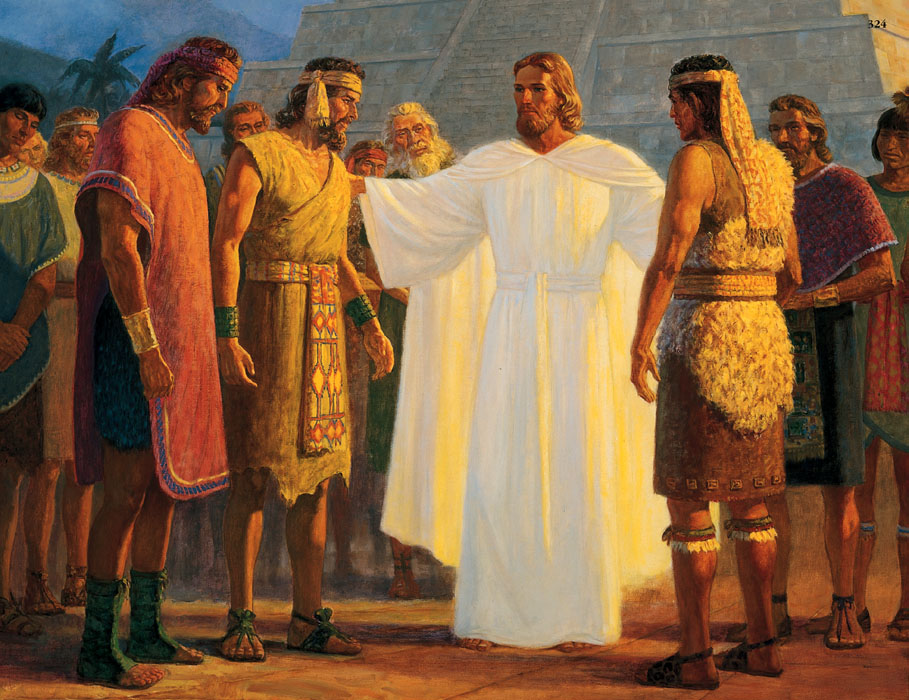 The Book of Mormon’s primary purpose is to testify of the Savior. In the process, it also gives us powerful insights into God and His gospel. Following are some of the teachings that help to define The Church of Jesus Christ of Latter-day Saints:
The Book of Mormon’s primary purpose is to testify of the Savior. In the process, it also gives us powerful insights into God and His gospel. Following are some of the teachings that help to define The Church of Jesus Christ of Latter-day Saints:
The Savior
And we talk of Christ, we rejoice in Christ, we preach of Christ, we prophesy of Christ, and we write according to our prophecies, that our children may know to what source they may look for a remission of their sins (2 Ne. 25:26 in the Book of Mormon).
The Book of Mormon talks about the Savior in nearly half its verses, which is more often than He is referred to in the Bible.
The people of the Book of Mormon knew of the Savior, even though they lived far from Jerusalem. The people had come from Jerusalem and brought with them the scriptures that existed in 600 BC. They had prophets who taught them of the Savior to come, and instructed them to look forward to the time when He would visit them in person. The people heard the voice of Christ shortly after His crucifixion, which occurred in the “first month of the year.” In the last month of that same year, He visited them in His resurrected, glorious state, and established His church among them, with twelve disciples according to the same pattern He used during His ministry.
In the Book of Mormon we learn “that as these things are true, and as the Lord God liveth, there is none other name given under heaven save it be this Jesus Christ, of which I have spoken, whereby man can be saved” (2 Nephi 25:20). Read the Book of Mormon to find powerful moments in the Savior’s life not recorded in the Bible.
Prayer
And now, my beloved brethren, I perceive that ye ponder still in your hearts; and it grieveth me that I must speak concerning this thing. For if ye would hearken unto the Spirit which teacheth a man to pray ye would know that ye must pray; for the evil spirit teacheth not a man to pray, but teacheth him that he must not pray (2 Nephi 32:8 in the Book of Mormon).
The Book of Mormon teaches us to pray to God when we need advice or comfort and warns us against those who try to make us afraid to pray. Building on the teachings of the Bible, the Book of Mormon tells us that prayer was created to give us a personal way to communicate with our Father in Heaven, and for Him to communicate with us. Those who know God well will recognize His voice when He speaks to them. Through prayer, an individual can know without question what is true, which church to join, and what God wants of him.
Saved By Grace After All We Can Do
The Bible tells us faith without works is not faith:
Even so faith, if it hath not works, is dead, being alone.
Yea, a man may say, Thou hast faith, and I have works: shew me thy faith without thy works, and I will shew thee my faith by my works.
Thou believest that there is one God; thou doest well: the devils also believe, and tremble.
But wilt thou know, O vain man, that faith without works is dead?
Was not Abraham our father justified by works, when he had offered Isaac his son upon the altar? ((James 2, King James Version of the Bible)
The Book of Mormon builds on this theme and explains to us just how this works.
For we labor diligently to write, to persuade our children, and also our brethren, to believe in Christ, and to be reconciled to God; for we know that it is by grace that we are saved, after all we can do (2 Nephi 25).
The “Mormons” believe nothing is required of us to be resurrected and to live forever. The atonement took care of the requirements that had to be met for this. However, most of us long not to live forever, but to live forever with God. For this, we must demonstrate our faith through our actions, as the Bible teaches. Then, because none of us can live a perfect life, the Savior’s atonement makes up the difference. We’re saved by grace after we’ve done as much as we can ourselves. God wants us to live the gospel and to follow His teachings—that’s why he blesses us with commandments.
These are only three things the Book of Mormon teaches. To learn more, continue to explore the basic beliefs section of this website or visit Mormon.org.
